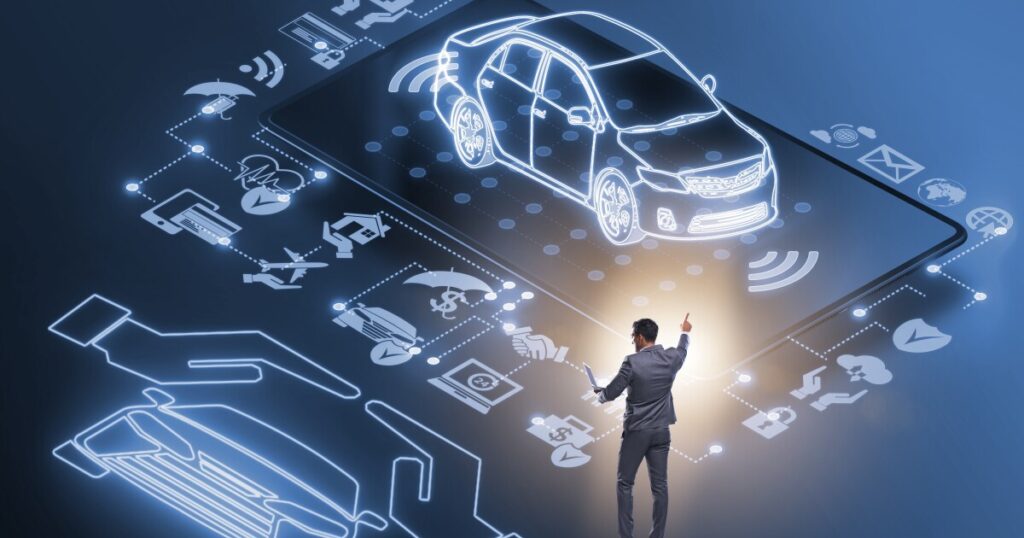How auto insurers are using tech and data to make the road safer

Enjoy complimentary access to top ideas and insights — selected by our editors.
While elements of modern technology can impair drivers, such as cell phone distractions, auto insurers are finding new ways to use tech to make the road safer, including usage-based insurance programs, automatic braking technology and roadside assistance partnerships.
The cost to repair a vehicle jumped approximately 20% year-over-year according to the June 2023 consumer price index. The increased use of technology in vehicles, coupled with more severe crashes due to higher rates of speed, supply chain issues and fewer service technicians, have dramatically affected repair costs, with replacement parts for non-accident-related repairs also rising. With these costs also comes increased auto insurance premiums, leaving many policyholders interested in usage-based insurance to lower costs.
Usage-based insurance allows carriers to provide coverage based on several factors unique to a driver, including miles driven per week, where a car is driven, if the driver is speedy and more. These plans typically rely on technology in a vehicle or a mobile device to monitor the factors.
Read more: Distracted driving rising, but so are mitigating technologies
State Farm’s Drive Safe & Save is an example of a usage-based program that personalizes coverage for policyholders based on driving habits. “Drive Safe & Save is our response to customer demand and enrollment is completely voluntary,” Dave Phillips, senior public affairs specialist for State Farm’s Eastern Market Area, recently told Digital Insurance’s Patricia L. Harman. “It provides our customers the power to personalize their auto premium based on the number of miles driven and how safely they drive. It uses telematics technology to measure an individual’s driving characteristics and the discount is based on how a customer drives. This may include things like annual mileage, fast acceleration, hard braking and cornering.”
Phillips adds that the program is the company’s largest discount opportunity for customers. “The average discount is between 10 and 15%, with even higher discounts possible depending on actual mileage driven and individual driving behaviors,” he said. “The discount can be up to 30% or even higher for some customers, with the maximum available discount at 50%.” In addition to the discounts, drivers who use the State Farm app will receive feedback to help them become even safer drivers.
Read more: Navigating the road to a sustainable auto insurance industry
According to the National Highway Traffic Safety Administration (NHTSA), the next era of driver safety technology will begin in 2025, and drivers can expect fully automated safety features and even highway autopilot completely taking over the wheel.
“In one of the most recent studies, it was found that vehicles equipped with most of these technologies are associated with reductions in claim frequencies for property damage liability and bodily injury liability approaching 40%,” Amanda Mezerewski, Travelers’ Personal Insurance vice president, recently told Digital Insurance’s Grace Crane, referencing research from the Highway Loss Data Institute (HLDI).
As more and more vehicles are manufactured with Advanced Driver Assistance Systems (ADAS) features — which include things like active cruise control or parking assist — McKinsey research reveals that some 25-35% of consumers are seldom using these features. However, when it comes to the future of autonomous vehicles, 51% of buyers said they could see themselves switching to a fully autonomous vehicle in the future; 19% said they would be open to vehicles without a manual drive option and 32% said they would prefer to switch if manual driving was still possible.
In a new partnership between AAA and Apple, iPhone 15 and 14 users in the U.S. will have access to AAA roadside assistance. “Crash detection and roadside assistance should be available to everyone, not just customers of top insurers and people that can afford the latest Apple devices,” said Rob Nendorf, director of analytics, Arity said via email to Digital Insurance’s Kaitlyn Mattson.
Other insurtechs, including Agero and HONK, are also working with insurers to add technology-focused features like artificial intelligence and GPS tracking capabilities to improve roadside assistance services.
Read more about how insurers are working to make the road safer below.







